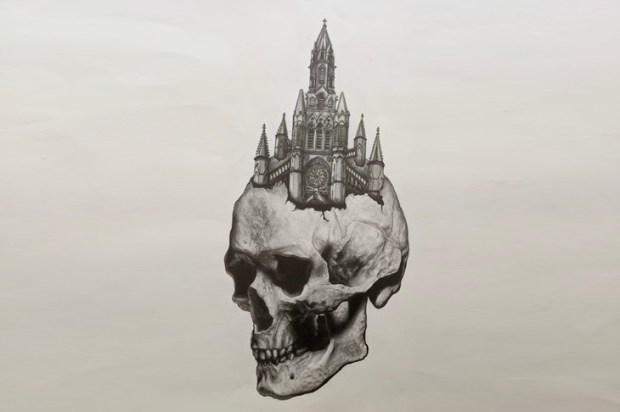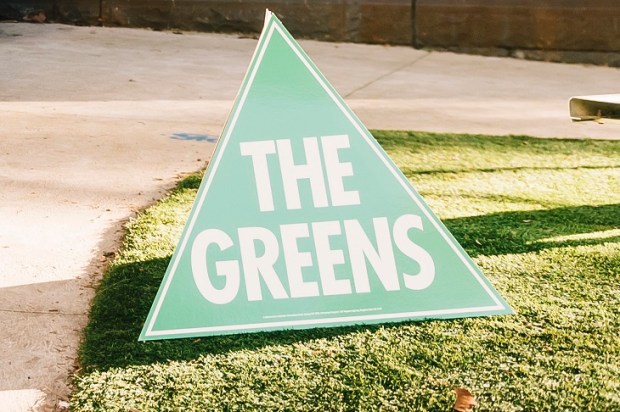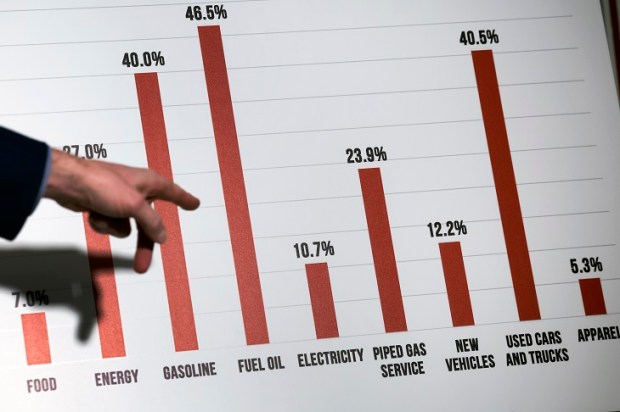That the West is in decline is hardly news. Plummeting educational attainment decreases in life expectancy, and strains in the social fabric are just a few of the problems roiling us.
Assorted reasons have been adduced for this. Christopher Caldwell has argued that almost all our issues are a result of the Civil Rights reforms of the 1960s. Others have advanced more generic causes involving lifestyle, technology, and culture. Others see our problems as a part of the cyclical process: little more than Spengler or Polybius applied to the present day.
While all these explanations are in large part true, it’s hard to deny that the main driver is the one that’s rarely discussed. That is, of course, demography.
So obvious is this becoming, even the richest man in the world is admitting it. As Elon Musk posted: ‘Demographics is destiny.’ A notion that’s supported by the likes of Canadian scientist Gad Saad, and which was observed years ago by his compatriot Mark Steyn. As Steyn famously noted: ‘The future belongs to those who show up.’
Indeed it does, and the consequences of our changing demography are here for all to see. To take the most obvious example, witness the response to the murderous attack by Hamas militants in Israel. Not only was this horrific event – the bloodiest day for the Jews since the Holocaust – not condemned by sections of the Australian community, it was celebrated.
In Sydney, there were dreadful images coming out of Lakemba: with a Muslim cleric praising the attack as an act ‘of courage’. Similar scenes were then seen at the Opera House when a braying mob shouted, ‘Gas the Jews!’ Much the same was witnessed across North America and Europe, with many European Jews considering leaving in light of the continent’s ‘soaring anti-Semitism’. Indeed, 50,000 French Jews have already left this decade alone.
Arab-Israeli tensions are long-running, of course. Yet what is new is the size of the anti-Israel sentiment in the West. The Yom Kippur War in 1973, for instance, did not produce the diffuse and large-scale anti-Semitism we’re seeing now. In many places, it was the opposite.
This is no longer the case. Hundreds of thousands of pro-Palestine protestors marched across England and Europe last weekend. Back home, Sydney and Melbourne saw mass pro-Palestinian marches for the third weekend straight. Sydney witnessed up to 50,000 protestors gather at Hyde Park while Melbourne saw 12,000 or so protestors at the State Library.
What explains this magnitude? It’s simply demographics. The Islamic population in Australia, for instance, has grown from around 80,000 40 years ago to over 800,000 now. In the three decades before 2011, for example, the Islamic population increased by 438 per cent. The Islamic growth rate is still three times the Australian average and it’s set to continue. Indeed, Islam is the fastest-growing religion in the world and the second-fastest (behind Hinduism) here.
Domestically, half of our Islamic population is in New South Wales. A development that explains Sydney’s pro-Palestinian protests and why the city has been such a hotbed of anti-Semitism. Suburban Lakemba, for instance, is now over 60 per cent Islamic.
Other parts of Australia are trending in the same direction. A further third of our Islamic population is in Victoria – hence Melbourne’s protests – and Islamic schools are the fastest-growing in the state.
Even the Apple Isle isn’t immune. As an ABC article notes, there are more than 3,000 Muslims in northern Tasmania. Indeed, Mostafa Seleem, the founder of the Masjid Mosque in Launceston, ‘has helped 10 northern Tasmanians convert to Islam since his mosque opened last year, nine from traditional Western backgrounds’.
Noticing this was once dismissed as a conspiracy or the rantings of the ‘far-right’. Yet it’s a trend that’s long been understood. The eminent Princeton historian Bernard Lewis believed in a coming Eurabia. As did the writer Bat Yeor. More famously, this was the major theme in French writer Michel Houellebecq’s 2015 book Submission. And to further prove the Frenchman’s point, there’s a Party of Islam now in Britain.
Yet it’s not only the Islamic demographic that’s changing Western politics, others are too. The Indian diaspora is now the second-largest in Australia. This does bring certain benefits, of course, yet it’s far from an unalloyed good. Earlier this year there was a riot in Melbourne’s Federation Square between Sikhs and Hindus. Clashes between pro-Hong Kong and pro-China protestors are seen across the country. A million other micro examples are witnessed every day.
These demographic shifts have plainly affected our politics. As ALP-watchers may have noted, the party is now riven over the Israeli-Palestinian conflict. Muslim MPs like Ed Husic and Anne Aly have been much more sympathetic to the plight of the Palestinians than others. As have non-Muslim MPs in heavily Muslim electorates like Tony Burke – often to the point of near-absurdity.
This is a stance that threatens to split the ALP and that illustrates the incoherence of the Left. Still, it’s a schism that could jeopardise our relationship with a pro-Israel America and our Western allies more broadly. As Israeli PM Benjamin Netanyahu notes, this isn’t only a battle between Israel and Palestine, but a clash between civilisation and barbarism.
Long term, however, Western demography bodes badly for Israel. As assorted polls show, the cosmopolitan cohort of youngsters in the West show much less affinity for the Jewish state than their elders. In some places, it’s an outright hostility.
These changing demographics are also impacting our democracy. To take the most obvious example, the ALP is firmly in control of all major offices in mainland Australia, with the Liberals barely seen. More importantly, Labor controls much of our urban areas and almost all of the heavily-populated and highly-diverse electorates of Western Melbourne and Sydney.
As ALP-affiliated pollster Kos Samaras notes, immigrants vote for the Left at a 20 per cent higher rate than the Right. Due to our new demographics, then, the entire country could soon resemble Victoria in being a one-party ALP-led state.
This is already happening overseas. In America, once-red states like California are now implacably blue. Archetypically conservative states like Texas are also trending leftward in the wake of waves of migration from south of the Rio Grande.
This shifting demography is also manifested in indirect but not unimportant ways. In education, for instance, it has contributed to teacher shortages in certain suburbs and assaults on teachers in others. It’s also a factor in Australia, which has some of the most disruptive classrooms in the world.
Demographic diversity has also proven detrimental in times of crisis. One of the reasons Covid restrictions were as harsh as they were in Melbourne, for instance, was our diverse demography. One needs only note the Andrews’ government’s hotel quarantine fiasco or the demography of those who helped keep Victoria in a near-interminable lockdown to confirm this claim.
Alterations to the Australian demos have also led to internal migration. As Jordan Knight has noted in the Spectator, rapid demographic change in areas like western Sydney has led to the much-decried yet undeniable fact of ‘white flight’.
A million other instances are also noted. Changing demographics have changed the zeitgeist that has led to the renaming of our suburbs and the tearing down of our statues. This is a tragedy for the old-Australia, of course, but a seeming inevitability for the new.
Our only consolation may be that it’s the same overseas. As the American writer Helen Andrews notes, the key issue is ‘not ideology, it’s demographics’. A claim that’s echoed by Canadian demographer Eric Kaufmann. As Kaufmann observes, ultimately, ‘It’s the ethno-cultural shift’ that’s the root of all our troubles. It is, as he states, simply ‘the demography, stupid.’
This may be a bitter pill to swallow – even a treasonous one, perhaps.
Still, an accurate diagnosis is the first step towards tackling the issue. Let’s hope our politicians take note.
Got something to add? Join the discussion and comment below.
Get 10 issues for just $10
Subscribe to The Spectator Australia today for the next 10 magazine issues, plus full online access, for just $10.


























Comments
Don't miss out
Join the conversation with other Spectator Australia readers. Subscribe to leave a comment.
SUBSCRIBEAlready a subscriber? Log in